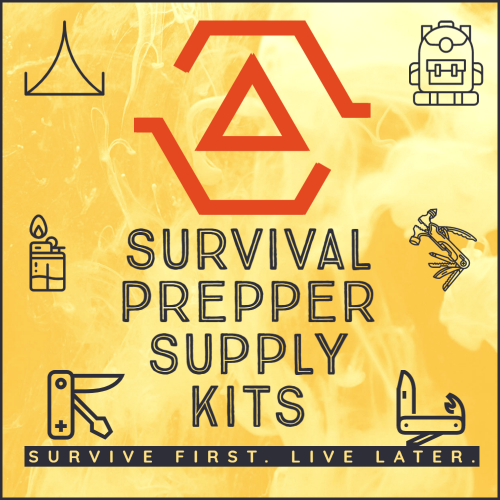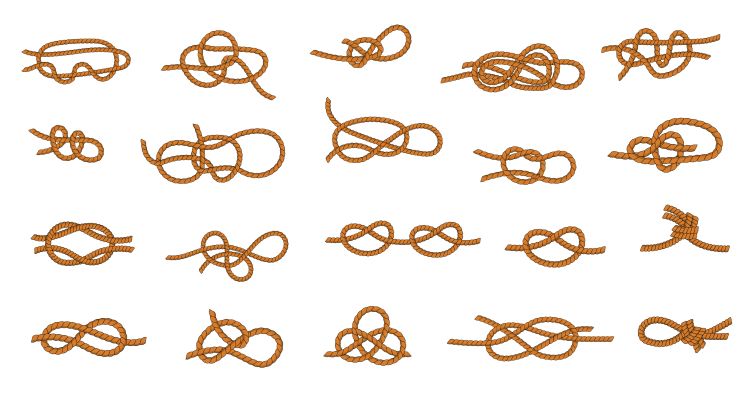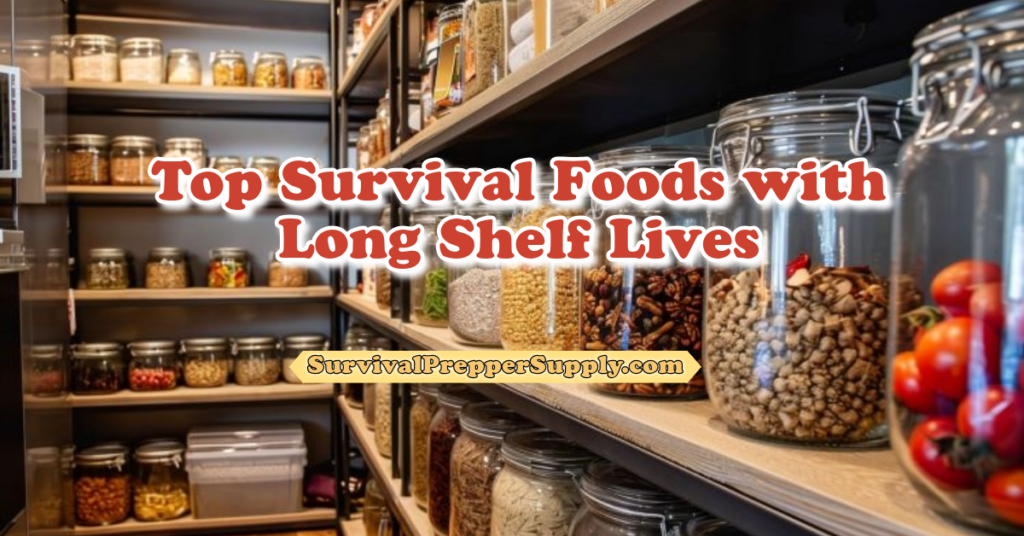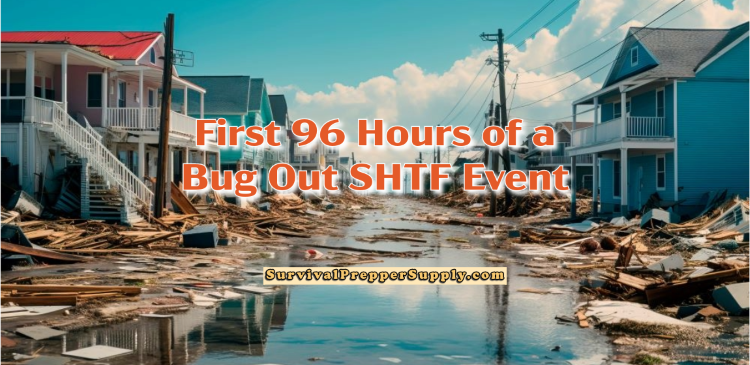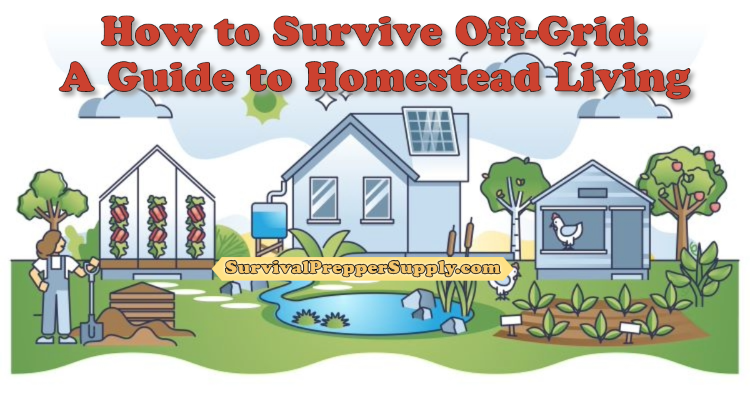In a crisis scenario, knowing several knots and their uses can be incredibly beneficial. These skills can be used for building shelters, safeguarding equipment, constructing snares, and handling other tasks. For instance, in an emergency, you may need to quickly secure a rope to a tree or pole to hang food or other supplies. Or you might need to build a shelter to protect yourself from the elements. In these cases, having a few basic knots in your repertoire can make a real difference.
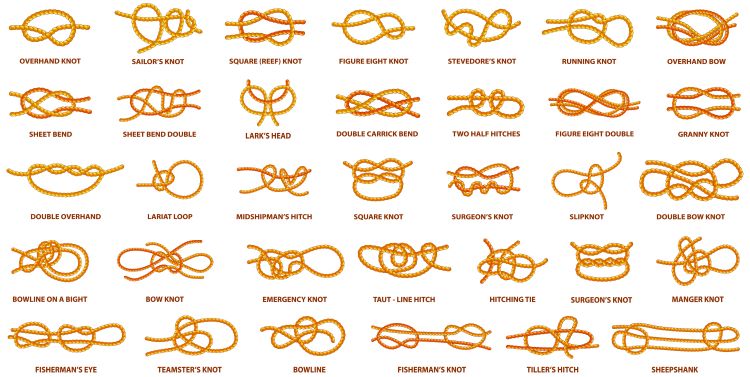
Additionally, knowing how to tie a knot can be helpful in securing equipment or supplies when you’re out in the wilderness. You can also use them to create traps to catch small animals for food. Overall, having a few basic knots in your toolkit can be a valuable asset in any emergency situation.
Read more: The Ultimate SHTF Survival Lessons Guide, Lesson #3-5, Shelter, Fire Building and Communication
1. Bowline:
– Utilize it to fasten the rope to form a loop at the end, which can be used to capture smaller animals.
– Utilize a sturdy loop to secure your equipment, sustenance, and even yourself to stay safe when traversing hazardous areas, such as steep cliffs.
– Secure a homemade tarpaulin shelter by creating a loop. Alternatively, construct a ridge line for a canvas tent.
I used to be able to tie a bowline behind my back. I can’t reach behind my back anymore due to a recent broken arm. I can still tie in my front, lol.
2. Square Knot:
– Connect two lengths of rope to create a longer length for various purposes, including constructing shelter or making snares.
– To create a basic shelter, tie two corners of the tarp together.
– Utilize it in first-aid circumstances to fasten bandages or splints on wounds.
You’ve probably tied a square knot at some time in your life, even if it was a mistake!
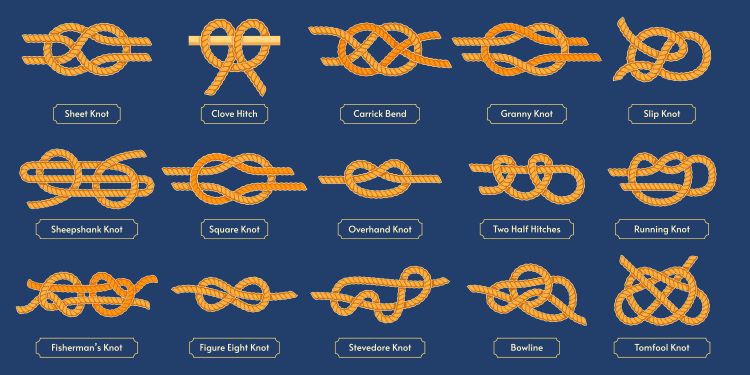
3. Clove Hitch:
– Attach a rope to a tree or a limb to keep equipment, food, and other items out of the reach of animals.
– Utilize it to fasten posts together to create shelter, trap, or signaling systems.
You use the clove hitch when you tie your boat to the dock. If you are around boats, you need to know this knot.
4. Sheet Bend:
– Utilize ropes of differing sizes to form a longer one for various tasks.
– Use this tool to fix or repair a damaged or broken wire.
Read more: Grid-Down Disaster? 9 Things You Need for Survival Prepping
5. Trucker’s Hitch:
– The trucker’s hitch is a knot used to secure two ropes together.
– Utilize the mechanical advantage of this knot when constructing a tarp or shelter in order to tighten and secure it more efficiently.
– Utilize this knot to attach weighty items to a backpack or a homemade sleigh.
I need to learn this knot. Sounds handy-dandy.
6. Prusik Knot:
– Use a Prusik knot to climb a rope in a climbing or rescue operation.
– Utilize this apparatus to tie a rope around a tree when creating a lift mechanism.
7. Butterfly Knot:
– The butterfly knot is a type of loop knot.
– Utilize a secure loop to create a makeshift harness or a system for rescuing someone.
– Utilize it for spontaneous descents or to lower yourself from cliffs or other challenging inclines.
Read this: 7 Steps to Building a DIY Survival Prepper Supply Kit – Survival Prepping Tips
8. Constrictor Knot:
– The constrictor knot is a type of knot used in climbing.
– Utilize it to fasten and hold things together, such as fabricating a grip for a spear or arrow.
– Bundles of firewood or another form of fuel can be secured with this knot for easier transportation.
9. Figure Eight:
– Use to prevent rope from passing through openings or pulleys, create a stopper knot at the end.
– Utilize it to fasten the end of your fishing line to prevent the bait or hook from becoming detached.
Read this: Survival Prepper Tips for Knowing When It’s Time to Bug Out
10. Timber Hitch:
– Use this tool to move logs or tree branches to construct shelters and collect firewood.
– Attach a sturdy pole to a tree or another sturdy support to make a tripod or makeshift structure.
In an emergency situation, understanding the appropriate knot for each task is crucial. Practicing these skills beforehand can enhance your ability to cope with diverse scenarios and improve your odds of surviving in the wild. Ensure that your knots are properly secured and conduct regular inspections to prevent mishaps. Common survival knots include the reef knot, the clove hitch, and the double fisherman’s knot. Practice tying these knots repeatedly until they are second nature. Additionally, it would help if you learned how to tie other common knots, such as the slipknot, the bowline, and the sheet bend. In an emergency, these additional skills can be lifesaving. There are many other types of knots that can be useful in an emergency, and it is important to be familiar with all of them.
I’m the daughter of 2 original survivalists who moved from the north to sunny Florida. My mother, along with her parents, bought 30 mostly uncleared acres in 1938. The first home was made of pecky-cypress and built by a house-raising. My mother raised 10,000 chickens.
My divorced mother met and married my father in 1948. From pine trees on our property, he hand-built a log cabin. He also built a tarpaper-lined 65’x45′ pool with duck pond overflow. We had an artesian well for our water and powering our hand-built waterwheel for the pool. He built a substantial cantilevered roof workshop with a car pit in the massive cement floor.
Since my early teens, I have read a ton of books about survival, prepping, the bomb, an apocalypse, homestead living, and SHTF situations. As an adult, I continue to read sci-fi, survival prepping, and science. I practice a prepper lifestyle albeit a bit modified, read a lot, buy a lot, pack/store a lot of anything survival related.
Read my About Me post for more details on our self-sufficient living. I lived there until I went to college in 1968.
My SurvivalPrepperSupply.com blog strives to educate individuals on coping with natural and human-caused disasters using article posts about preparing for emergencies.
